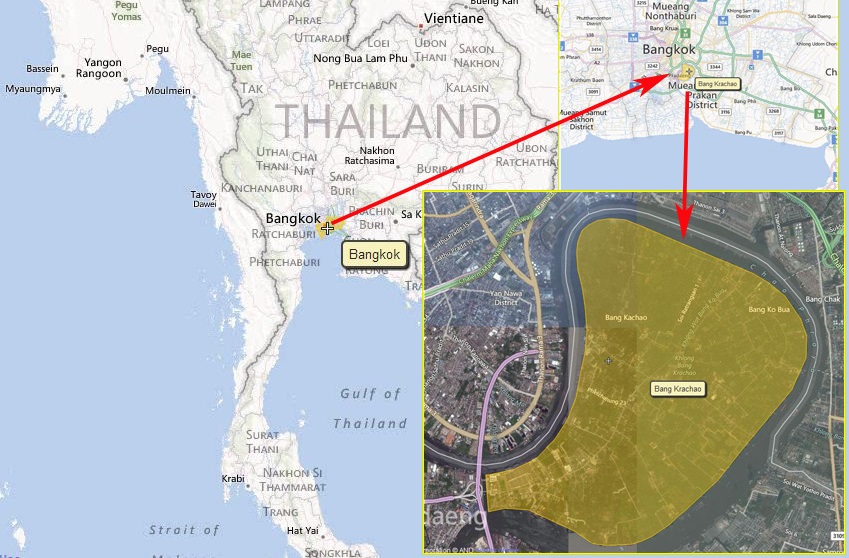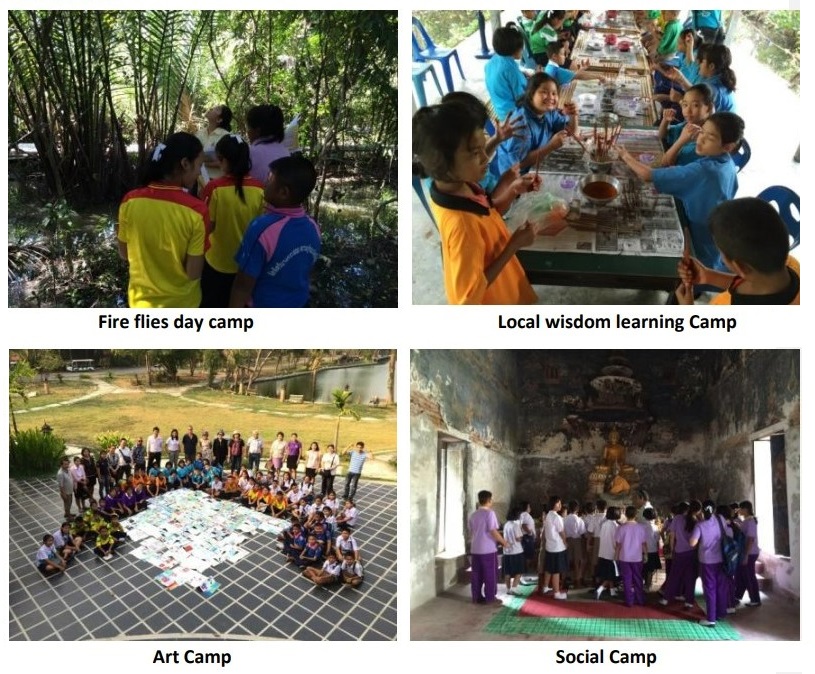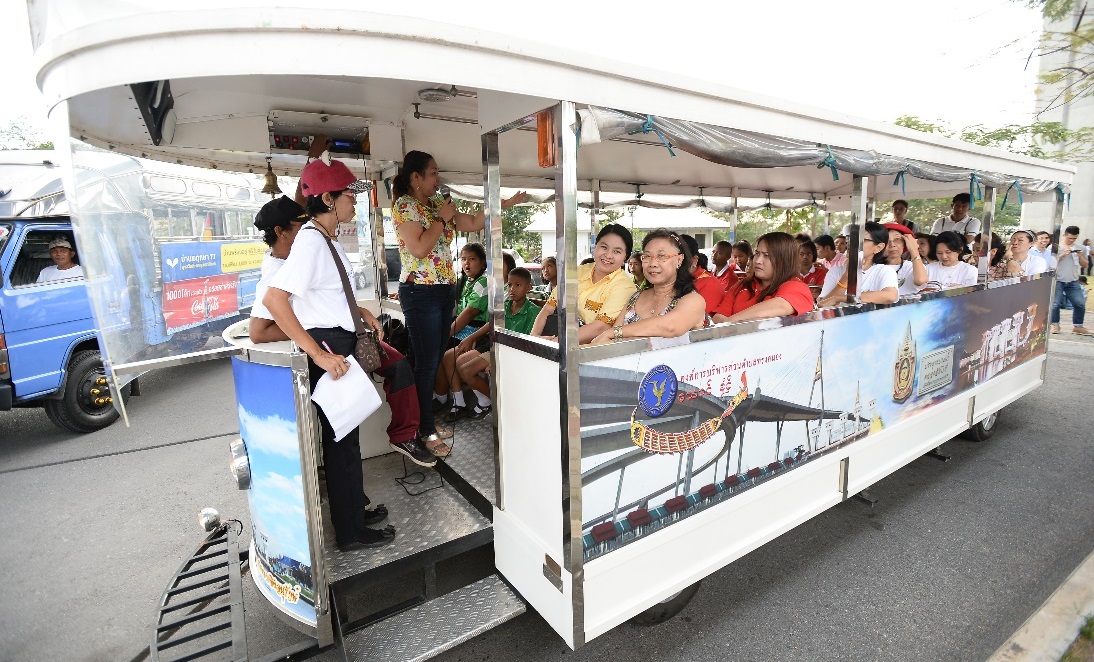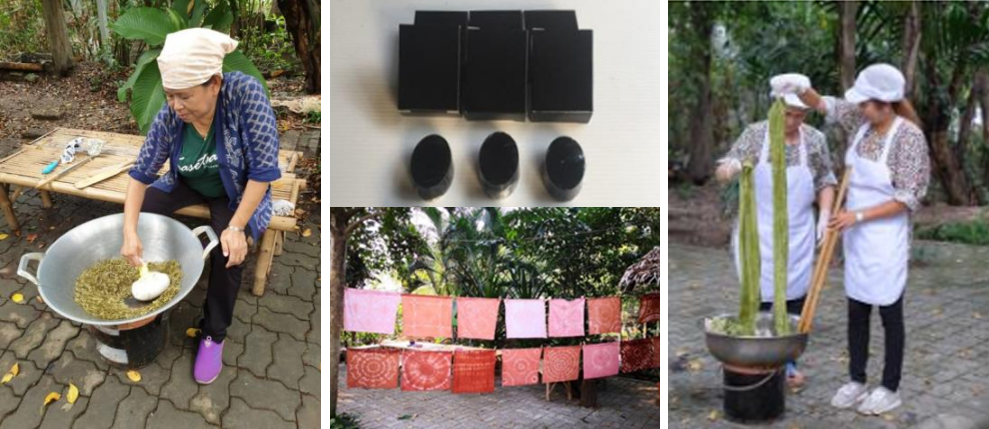Strengthening Urban Forestry Demonstration Site of Bang Kachao (Thailand) for Biodiversity Conservation and Natural Learning Center
Project title: Strengthening urban forestry demonstration site at Bang Kachao (Thailand) for Biodiversity Conservation and Natural Learning Centre [2012P1-THA]
Executing agency: Royal Forest Department of Thailand
Implementing Agency: Royal Forest Department (RFD) of Thailand
Budget in USD (total/APFNet grant): 300,900/ 128,600
Duration: 5/2013 - 12/2018
Project Category: Demonstration Project
Target economy: Thailand
Location: Bang Kachao, Bangkok, Samut Prakarn
Objectives:
-
Establish a demonstration and learning site for interested groups and visitors.
-
Develop and promote biodiversity conservation by linking the number of visitors and the income flow of the local people.
-
Maximize the potential of the areas as an ecotourism attraction by improving the habitat for dependent flora and fauna species.
Outputs:
Output 1: Establish an urban forestry demonstration and learning site.
Output 2: Establish a biodiversity conservation area and develop this through ecotourism channels to increase visitor numbers and the incomes of local people.
Output 3: Maximize the site’s eco-tourism potential by improving habitats for flora and fauna species.
Output 4: Outreach publications.
Activities:
Activity 1.1 -1.2: Establishing an exhibition and interpretive center and maintaining the character and value of the project site for ecotourism.
Activity 1.3: Implementing a natural conservation and urban forestry program as part of the curriculum for local school children.
Activity 1.4: Encouraging local volunteers and youth groups to involve in the education programs.
Activity 2.1 - 2.2: Developing facilities of the project site and marketing the project site to potential visitors.
Activity 2.3: Training local people as tour guides.
Activity 3.1 - 3.2: Developing conservation sites to maximize biodiversity.
Activities 4.1-4.2: Documenting and reporting the project information.
Project background
Cities are often compared to jungles, yet few have any real jungles, especially not the rapidly growing cities in Southeast Asia. Yet, located in the center of Thailand’s capital Bangkok, the small island of Bang Kachao contains a true “urban jungle,” the last survivor from urban expansion in the lowlands of Bangkok’s central plain. Approximately 2,000 ha, this island can potentially be a significant demonstration site for urban forestry in Southeast Asia. In 2008, the island was nominated as the major site for demonstrating the urban forestry program of Thailand’s Royal Forest Department (RFD). RFD established the island's 30 ha as the Sri Nakhon Khuan Khan Green Area and Eco-Management Centre to promote biodiversity conservation. However, many activities, such as biodiversity conservation, ecotourism, and site maintenance, were limited by a lack of facilities. The area was not developed as a tourist attraction or provided significant revenue for local residents.
Consequently, APFNet funded a project at the Bang Kachao Biodiversity, Conservation, and Natural Learning Centre to develop capacity-building programs and promote ecotourism to improve livelihoods and biodiversity conservation. Figure 1 shows the location of the project site. This project aims to maximize biodiversity conservation and strengthen the urban forestry program through a demonstration site and learning center establishment, including ecotourism promotion and benefits for local communities. Successful project activities will also be used as a model to apply in other areas of Thailand and elsewhere.

Fig.1 Location of the project site
Project featured topics
Establishing demonstration and learning sites
The exhibition and interpretive center were established in Suan Pa Ket Nom Klao Urban Community Forest (UCF) as an activity base of the community to organize field trips for children and organizations and a community eco-tourism program for Bangkok day trippers and visitors. The long-term sustainability of Bang Kachao has been linked to ecotourism by improving facilities and interesting stories (i.e., culture and norms) in order to increase visitor numbers. Therefore, semi-permanent facilities and constructions, such as a bamboo boardwalk, a wooden hut with a root of Nypa palm leaves for a learning station about natural dye, an information center, and a community forestry nursery were set up within Bang Kachao to preserve and harmonize with nature as much as possible. Then, education programs related to local curriculum practices have been developed with training camps such as a fireflies’ day camp, local wisdom learning camp, art camp, social camp, sports day, and field trip activities for local teachers and children (see Fig.2). This activity aims to help school children to develop the critical thinking they need to understand the importance of natural resources. It also encourages children to act on their own to conserve natural resources and use them responsibly.

Fig.2 Training camps for the children
The sustainable conservation of Bang Kachao depends on the active participation of the local communities. Awareness and education programmes were set up for local volunteers and youth groups in the local communities to promote the value of Bang Kachao. Fig.3 shows a one-day guided visiting program on a shuttle bus. The woman group of Suan Pa Gade Nom Glao UCF was selected to be trained for capacity building for community-based eco-tourism. Local professional groups were encouraged to run the marketing program and taught to target special interest groups, such as cyclists or photographers. Marketing channels have been developed to attract nature lovers and people interested in local cultures, such as social media, while new materials are created for visitors, including a cycling/walking route map, firefly trip leaflet, boat-cruising trip, bird-watching guide, etc. One of the functions of the demonstration and learning centre is to act as a training centre for capacity-building activities. Local people were also trained as tour guides with a broad knowledge of local history, geography, flora and fauna, hiking routes, and hands-on training to develop local products such as tea, soap, local recipes, and scarves made of different pieces of Ardisia plants (see Fig.4).

Fig.3 One-day guided vising program on a shutter bus
Fig.4 Hands-on training to develop local products such as tea, soap, local recipes, and scarves made of different pieces of Ardesia plants.
Using urban forestry to improve habitats
Ecotourism sites should be comparatively rich in biodiversity, and, more importantly, the habitat should reflect what is commonly understood as “natural” for the area. A plant and bird species survey was conducted to establish baseline information for conservation sites feeding endemic fauna within Suan Pa Ket Nom Klao Urban Community Forest (UCF). RFD officials, local communities in the study area, and children from Pa Ket Nom Glao local schools carried out the survey. Given that much of Bang Kachao has been used by local people for coconut plantations and other agriculture, it was essential to restore the original flora and fauna of the area. Fig.5 shows that local community members were trained to conduct plant species surveys.
A biodiversity management plan and local genetic conservation sites were developed to protect endemic flora and fauna species from balancing the potential impact of increasing numbers of visitors on biodiversity. A species database was created through collaboration between scientific institutions, schools, and local communities. The enrichment planting to maximize biodiversity within the project site has been using the “Miyawaki Planting Model” to create a “dense forest” for environmental protection instead of “planting a tree”. Biomass production and carbon sequestration were measured by establishing and measuring permanent plots.

Fig.5 Plant species survey
Project Outcomes
The project has achieved its objectives and has had a significant impact on the area by converting it into an urban forestry demonstration site. The project created a vital demonstration site for urban forestry in Southeast Asia. Developing a conservation and urban forestry program with community-based ecotourism showcases how conservation and livelihoods can be combined in an urban setting in a developing economy.
Suan Pa Ket Nom Klao UCF has been chosen as the location for the information centre for Biodiversity Conservation work and ecotourism information, as well as the local training centre. This site has proven the idea as it enables a strong collaboration between local communities and other partners who were already at the site. The project has developed outdoor activities to help explore the children’s learning potential and encourage students to get close to nature.
A conservation site and bird-watching site were established. An inventory of the plants and birds in this area was conducted. Feeding programs were established for birds and other endemic fauna already present to ensure their continued survival. Fig.6 shows examples of bird species found during the surveys. Rather than simply providing food, the project sponsored a program to plant fruit tree species such as Java plum (Syzygium cumini), rukam (Flacourtia rukam), Luna nut (Lepisanthes fruticose), mango (Mangifera pentandra), and jackfruit (Artocarpus heterophyllus) to attract fruit-eating birds, and small animals. Flowering tree species, such as Japanese lantern (Hibiscus schizopetalus), Indian oak (Barringtonia acutangular), white thingan (Hopea odorata), cork tree or mangrove apple (Sonneratia caseolaris), and true mangrove (Rhizophora apiculata), were planted to attract insect-feeding birds and create a tourist attraction all year round.

Fig.6 Examples of bird species found during the surveys(Left: White-breasted waterhen; Right: Stork-billed Kingfisher)
Access to biological resources through ecotourism will benefit the economic status of communities within the project site. Strategies, planning, and implementation regarding forest management within the project sites have shown a significant impact from the project implementation.
People in the target community are aware of the importance of protecting the environment because they recognize the value of forests. Adding value to the products derived from forests can improve their livelihoods. Improving local incomes through ecotourism is one tool to decrease community pressure on the forests and swamps of the island. Creating a tour program and community local products (handmade) enhanced the attraction of day trips and overnight trips in Bang Kachao, which can bring revenue for tourist service (Day trip charged 850 Baht (26 USD) per head, overnight with dinner charged 1,800 Baht (54 USD) per head) as well as related areas in Bang Kachao. It is estimated that visitors will spend at least 1,000-1,500 Baht per day, including the tour program and their other shopping.
 Project documents
Project documents
2012P1-THA Project Proposal
2012P1-THA Completion Report
Survey report: Survey Report of Plant and Bird Species in Suan Pa Ket Nom Klao Urban Community Forest, Phra Pradaeng District, Samut Prakarn Province, Thailand







 Project documents
Project documents